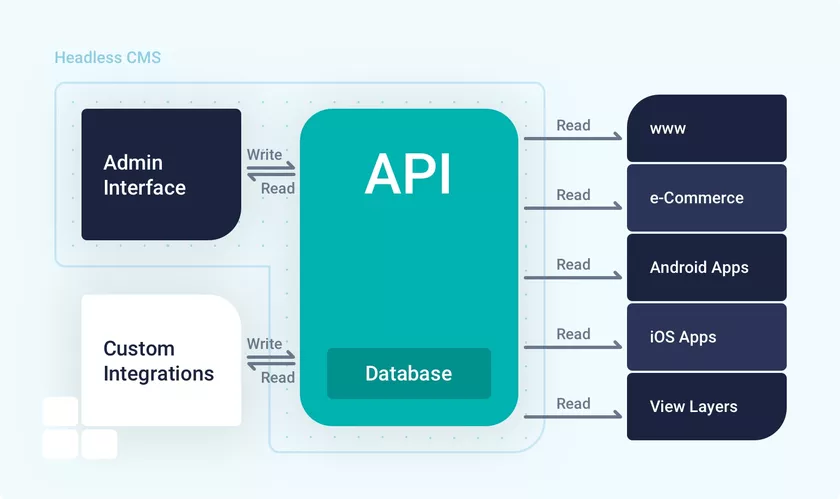
The familiar phrase – Running like a headless chicken – may evoke derisive laughter but when it comes to Website Development, running a headless CMS is the most sophisticated way to run a superfast and versatile website across different user-interfaces. A Headlines CMS thus holds only the content and leaves the task of presentation to another application residing on multiple platforms.
A headless system as the name suggest has a body but no head. A traditional CMS has everything in a single fused layer which means the content, CSS, HTML are bound together and have to appear as one single entity. This restricts the deployment of the content on different platforms such as mobile apps, web browsers, smart watches, and kiosks. Tightly coupled CMS are difficult to deploy on different front-end and thus was born the idea of a flexible system that is only a body to hold the content and it came to be termed ‘Headless’ CMS.
The earliest headless CMS can be traced back to the concept of MVC or Model-View-Controller. This three tier-architecture allowed developers to build the application in three independent layers. Here the content (data) was handled separately while leaving the view to be managed by a front-end platform such as a web-browser.
The most popular website WordPress is a tightly coupled system that allows the developer to build templates that display the content populated in the posts and pages in the admin. These templates are designed to work on different browsers and resolutions (mobile, for example), with the help of CSS. All this is coupled in a single WordPress environment.
A RESTful or GraphQL API
In a headless CMS, the CMS job is only to provide an interface to the user enter the content in terms of text, images and video. A RESTful or GraphQL API delivers the content to a separate application that displays the data. Therefore, a mobile application, such as catalogue can invoke the APIs to pick up certain content that it needs to manage e-commerce transactions, while another application may use the same content to allow a user to browse a kiosk for product features and demonstrations. A smart watch may extra images of different resolutions from the same content table of the headless CMS.
The architecture benefit is not just the ability to use content via multiple platforms but also aids in faster delivery due to the customization available in the presentation features of the front-end. emQube has the competency to implement your project on a headless CMS if your content requires omnichannel support.
Popular examples of a headless CMS are Storyblok, Contentful, Prismic, and Sanity. You may also consider either using Angular or React JS for your front-end delivery or Gatsby static-site-generator.
emQube has the competency to implement your project on a headless CMS if your content requires omnichannel support.
Mohammed Sutarwala, Managing Director, emQube.
Latest Posts
Categories
- Business
- E-Commerce
- Emerging Technologies
- Facility Management
- Influencers
- Intellectual
- Marketing
- Mobile Development
- Personal
- Sales Management
- Search Engine Marketing
- Social Media
- Software
- Spiritual
- Web Layout



